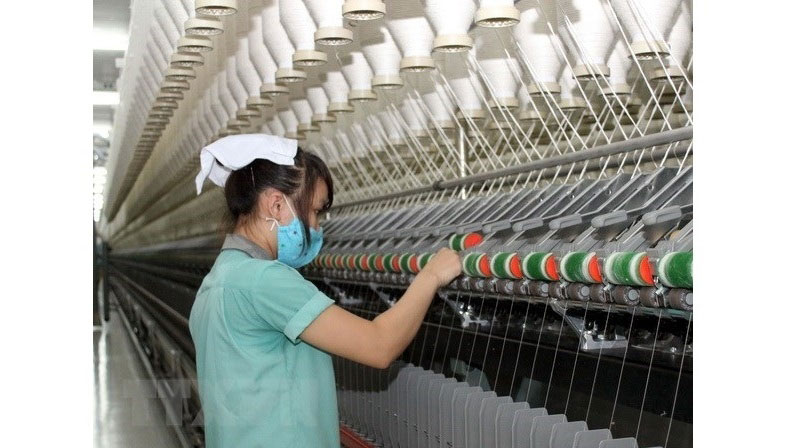
The construction of a sheep wool factory kicked off at the Phat Chi industrial complex in Da Lat city of the Central Highlands province of Lam Dong on June 15.
|

The wool factory is estimated to
produce about 4,000 tonnes of wool per year for domestic consumption and
exports. (Illustrative photo: VNA)
|
|
|
|
The factory, to be built at a cost of US$50 million, is a joint
project between the German Sudwolle Group and the Ho Chi Minh City-based Lien
Phuong Textile and Garment Corporation.
Covering a total area of more than 61,000 square metres, it is
estimated to produce about 4,000 tonnes of wool per year for domestic
consumption and exports.
Upon its operation in April 2019, the factory will use imported
materials to produce wool. Vietnam currently has 50 garment facilities using
wool, with most of them using materials imported from Australia.
The factory is expected to generate revenue of more than US$100
million per year and create jobs for 400 local labourers. It will also be
open to the public for visitors to witness all wool-making steps.
|
Source: NDO
According to data from the Hoa Binh Provincial Party Committee, the industrial production index for the first six months of 2025 is estimated to have increased by 20% compared to the same period last year. This marks the highest year-on-year growth rate for this period since 2020.
In the first six months of 2025, Hoa Binh province’s export turnover was estimated at 1.145 billion USD, marking an 18.11% increase compared to the same period in 2024. Import turnover was estimated at $ 804 million, a 17.15% increase, which helped the province maintain a positive trade balance.
The lives of the ethnic minority farmers in Tan Lac district have gradually improved thanks to the new directions in agricultural production. This is a testament to the collective strength fostered through the professional associations and groups implemented by various levels of the district’s Farmers’ Union.
With the motto the "product quality comes first,” after nearly one year of establishment and operation, Muong village’s Clean Food Agricultural and Commercial Cooperative, located in Cau Hamlet, Hung Son Commune (Kim Boi district), has launched reputable, high-quality agricultural products to the market that are well-received by consumers. The products such as Muong village’s pork sausage, salt-cured chicken, and salt-cured pork hocks have gradually carved out a place in the market and they are on the path to obtaining the OCOP certification.
In the past, the phrase "bumper harvest, rock-bottom prices" was a familiar refrain for Vietnamese farmers engaged in fragmented, small-scale agriculture. But today, a new spirit is emerging across rural areas of Hoa Binh province - one of collaboration, organisation, and collective economic models that provide a stable foundation for production.
Maintaining growing area codes and packing facility codes in accordance with regulations is a mandatory requirement for agricultural products to be eligible for export. Recently, the Department of Agriculture and Environment of Hoa Binh province has intensified technical supervision of designated farming areas and packing facilities to safeguard the "green passport" that enables its products to access international markets.


